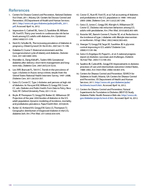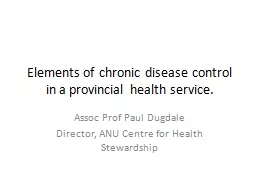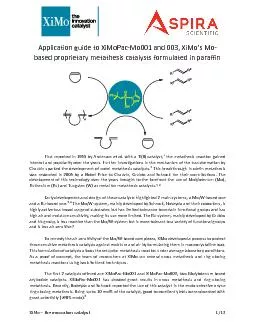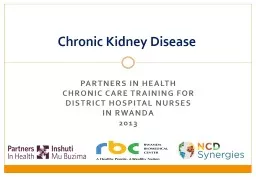PDF-National Ce nter for Chronic Disease Pr evention and Health Pr omotion Division of Diabetes
Author : giovanna-bartolotta | Published Date : 2015-01-23
The act states that the report card should be published by the Centers for Disease Control and Prevention CDC every 2 years and include data about diabetes and prediabetes
Presentation Embed Code
Download Presentation
Download Presentation The PPT/PDF document "National Ce nter for Chronic Disease Pr ..." is the property of its rightful owner. Permission is granted to download and print the materials on this website for personal, non-commercial use only, and to display it on your personal computer provided you do not modify the materials and that you retain all copyright notices contained in the materials. By downloading content from our website, you accept the terms of this agreement.
National Ce nter for Chronic Disease Pr evention and Health Pr omotion Division of Diabetes: Transcript
Download Rules Of Document
"National Ce nter for Chronic Disease Pr evention and Health Pr omotion Division of Diabetes"The content belongs to its owner. You may download and print it for personal use, without modification, and keep all copyright notices. By downloading, you agree to these terms.
Related Documents














